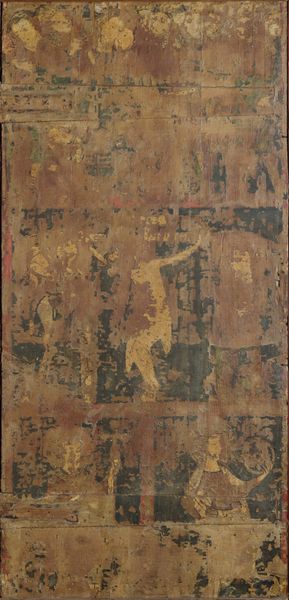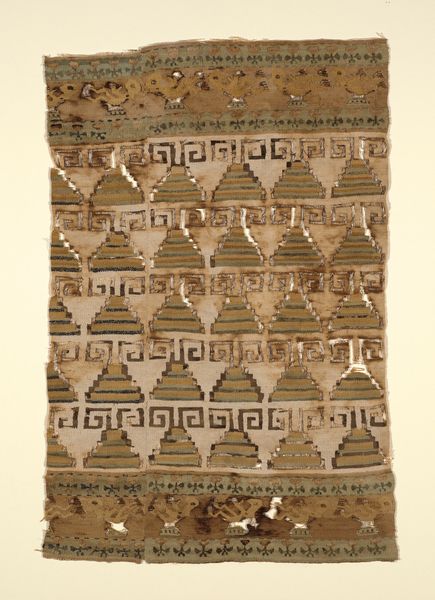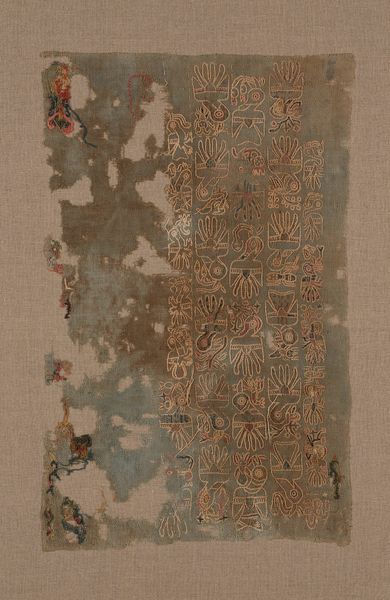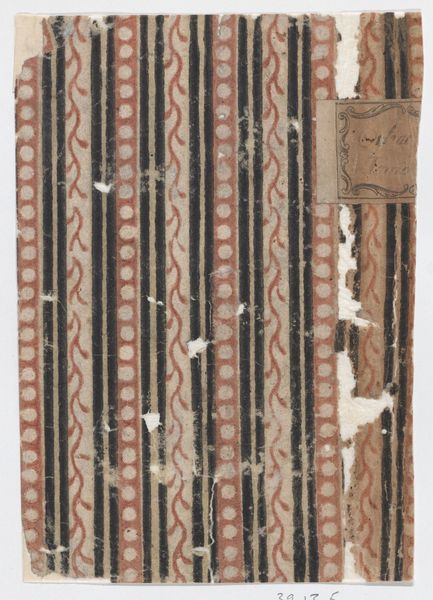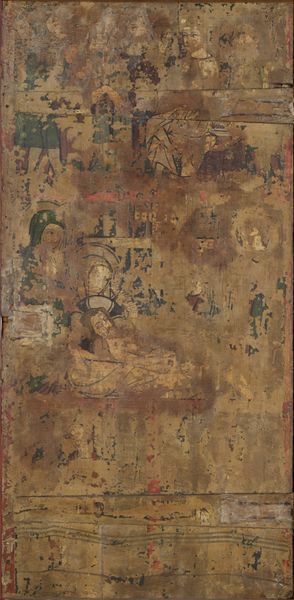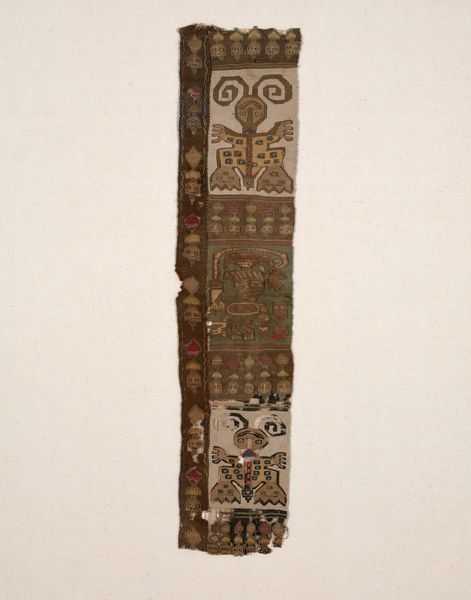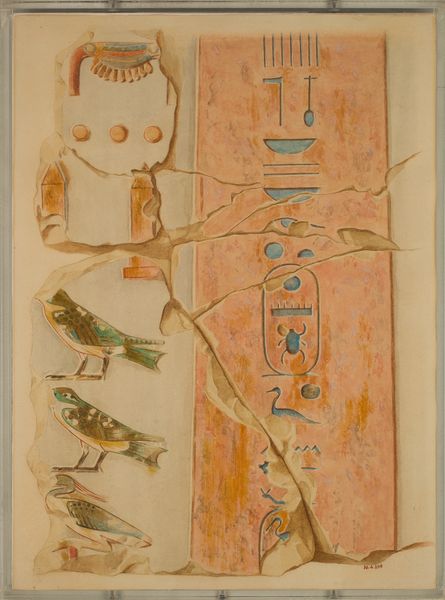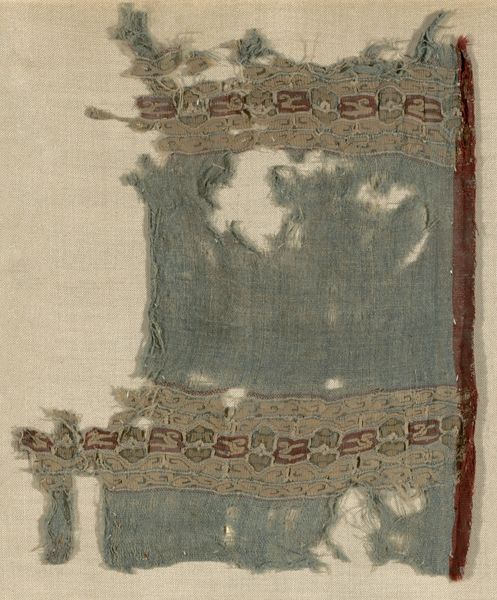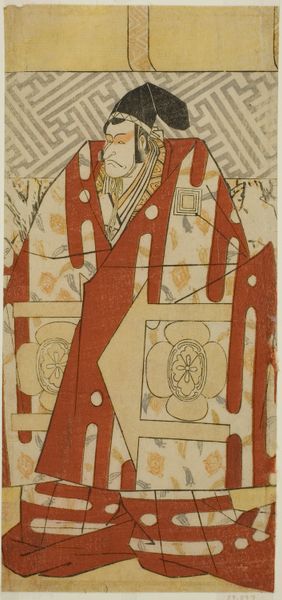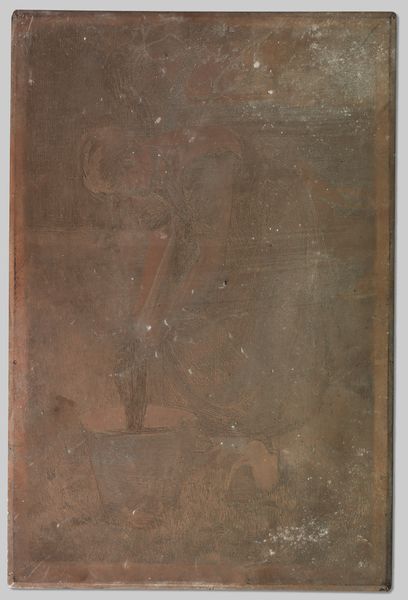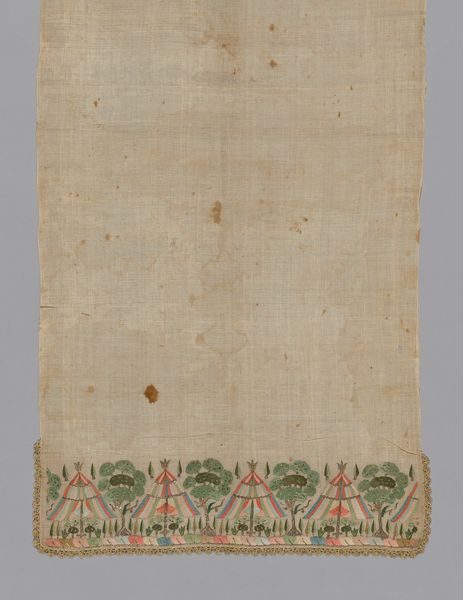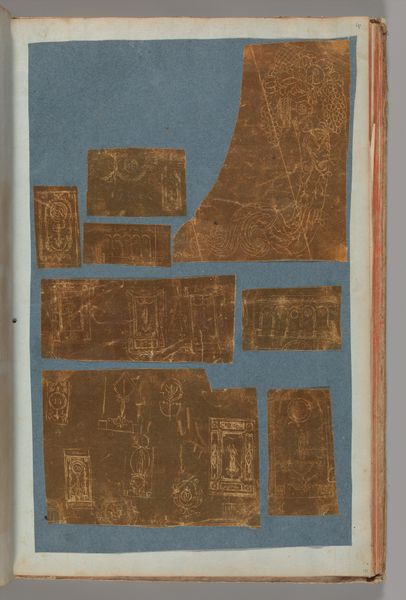
carving, pigment, relief, sculpture, wood
#
african-art
#
folk-art
#
carving
#
pigment
#
muted colour palette
#
sculpture
#
relief
#
folk art
#
sculpture
#
wood
Dimensions: 42 1/2 x 27 in. (108.0 x 68.6 cm)
Copyright: Public Domain
Curator: This is a Senufo granary door, dating back to the 19th century. Editor: The texture jumps out—that weathered wood grain, those subtly raised figures...it exudes a potent history. It almost feels like a palimpsest of symbols, a testament to visual language. Curator: The Senufo people, located primarily in Côte d’Ivoire, used doors like this as literal barriers but also as powerful statements about wealth and social structure. Note the recurring motifs – the hornbill bird atop what appears to be an animal, perhaps a bush cow. Editor: Precisely. The bird – its form simplified to pure shapes – presides over the animal form below, contained within this ordered grid. A visual hierarchy that suggests a cosmology rendered in graphic simplicity. Then we get a kind of dynamic visual chaos beneath with the animal forms and the abstract geometric motifs. Curator: And look at the frame: triangles rendered in alternating black and red pigments that surround the edge. That interplay between abstraction and representation reflects not only aesthetic preferences but the resources available to create these visual stories. Editor: The relief is so subtly rendered. And the restrained palette contributes to the power. No jarring contrasts, no dazzling colors—just earth tones elevated to visual poetry. It evokes such quiet authority, an implicit power inherent in the design. Curator: Indeed. The wood used was carefully chosen, treated, carved. And it speaks to the material reality of Senufo life – agrarian and ritual. A material legacy intricately linked with symbolic meaning. Editor: I see in the door not only the beauty of the object itself, its textures and forms, but the entire complex language it is a component of, giving clues about a complete symbolic system. It provides a lens for exploring cultural values expressed formally and materially. Curator: Absolutely. Appreciating this granary door isn’t only about enjoying its physical attributes, but understanding the Senufo cultural practices it was part of. The door represents far more than a mere object, and allows us to contemplate broader patterns of Senufo culture. Editor: A synthesis of labor, resources, artistic expression, and spiritual intent... It truly brings a whole culture into focus.
Comments
minneapolisinstituteofart about 2 years ago
⋮
Granaries made of dried mud and wood were used to store grain from the villager's fields. The doors to these storage units were often carved and painted with animals such as the fish, horse and crocodile on this door which relate to Senufo stories and agriculture.
Join the conversation
Join millions of artists and users on Artera today and experience the ultimate creative platform.
